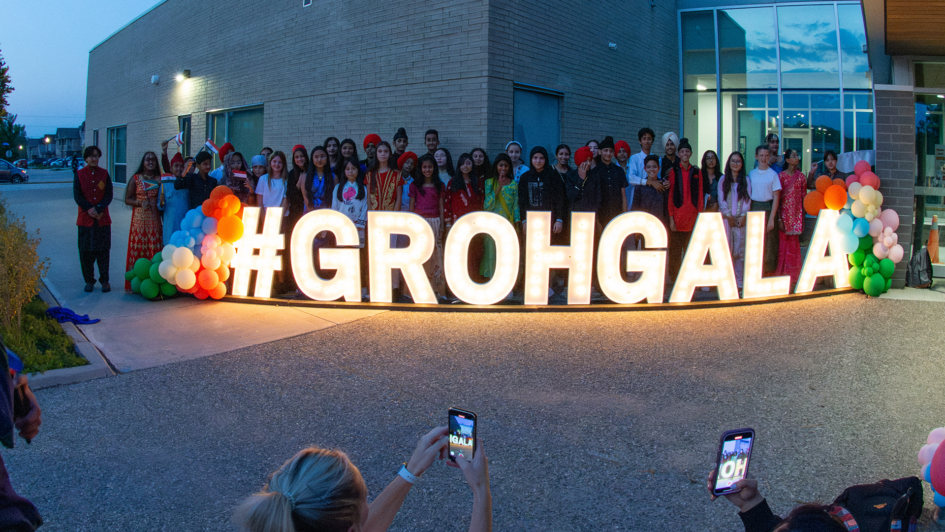
October 26th, 2023
Students at Groh Public School in Kitchener are taking the lead in their learning journey thanks to a design thinking approach used by their teachers. We first caught up with the students in December 2022, as they set out with the goal of improving the experiences of newcomers in their community. Groups of students in the class created proposals to address a need, and pitched it to a panel of Smart Waterloo Region Innovation Lab (SWRIL) representatives. Four groups received funding, and put their plans into action.
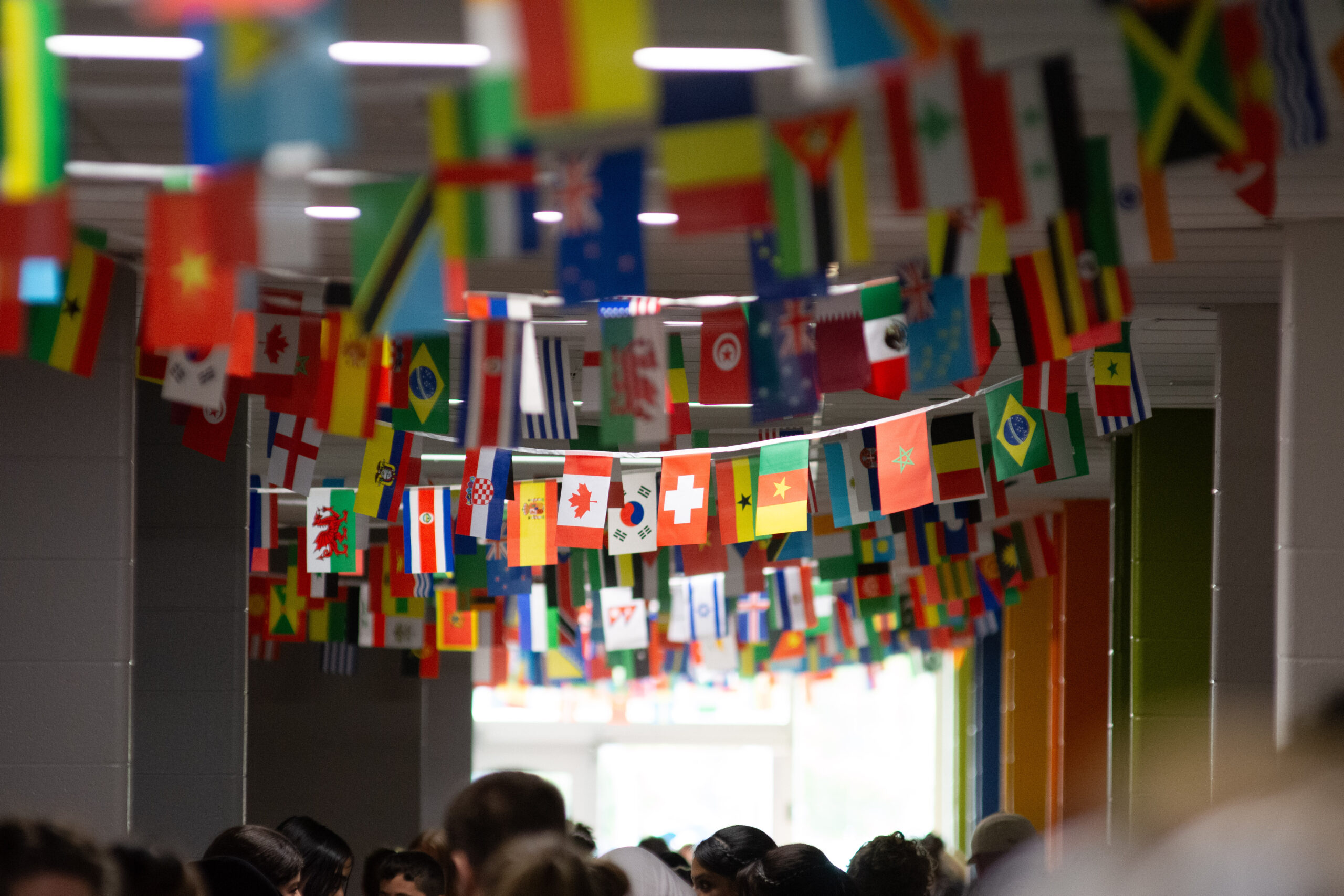
Teachers Jen Schaefer and Jes Neilson took these students on a unique journey as they completed each of the required learning areas in Grade 7, and then some. Through their design thinking inquiry, students delved deeply into subjects like critical thinking, collaboration, geography, mathematics, science, project management, communications technology, and more.
“The learning is there, you can tease out all of those learning skills and critical thinking skills,” said Jen. “We’re connecting to all kinds of different curriculum points.”
The two teachers have a history of engaging in exciting, new learning opportunities with their students, but this past school year took things to a different level. The results, though, spoke for themselves as all students saw they could make meaningful change through their work in the classroom.
“They recognize that student voice does matter,” said Jes. “When students are empowered to come up with these great ideas, something does happen. It was more purposeful and meaningful, because every student could engage.”
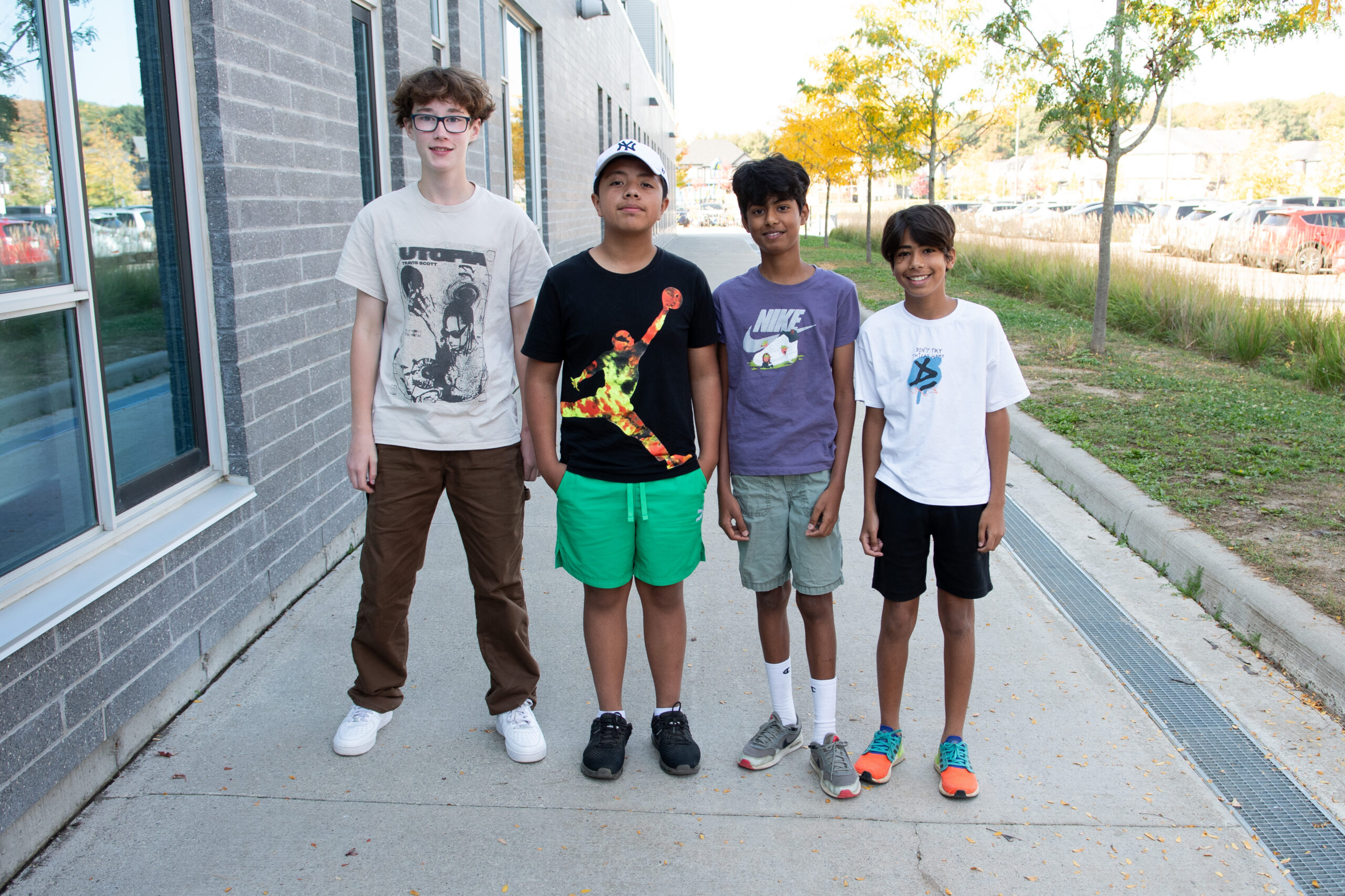
Groh Global Gala
Engaging in meaningful change was certainly true for Aly, Vihaan, Daniel and Pepe, who formed the group A.V.D.P. They led the planning and execution of the first Groh Global Gala. Now in Grade 8, the students reflected on what it was like to take their pitch in front of a panel of experts from SWRIL, in hopes of receiving funding for their project.
“We were really excited and nervous,” said Pepe.
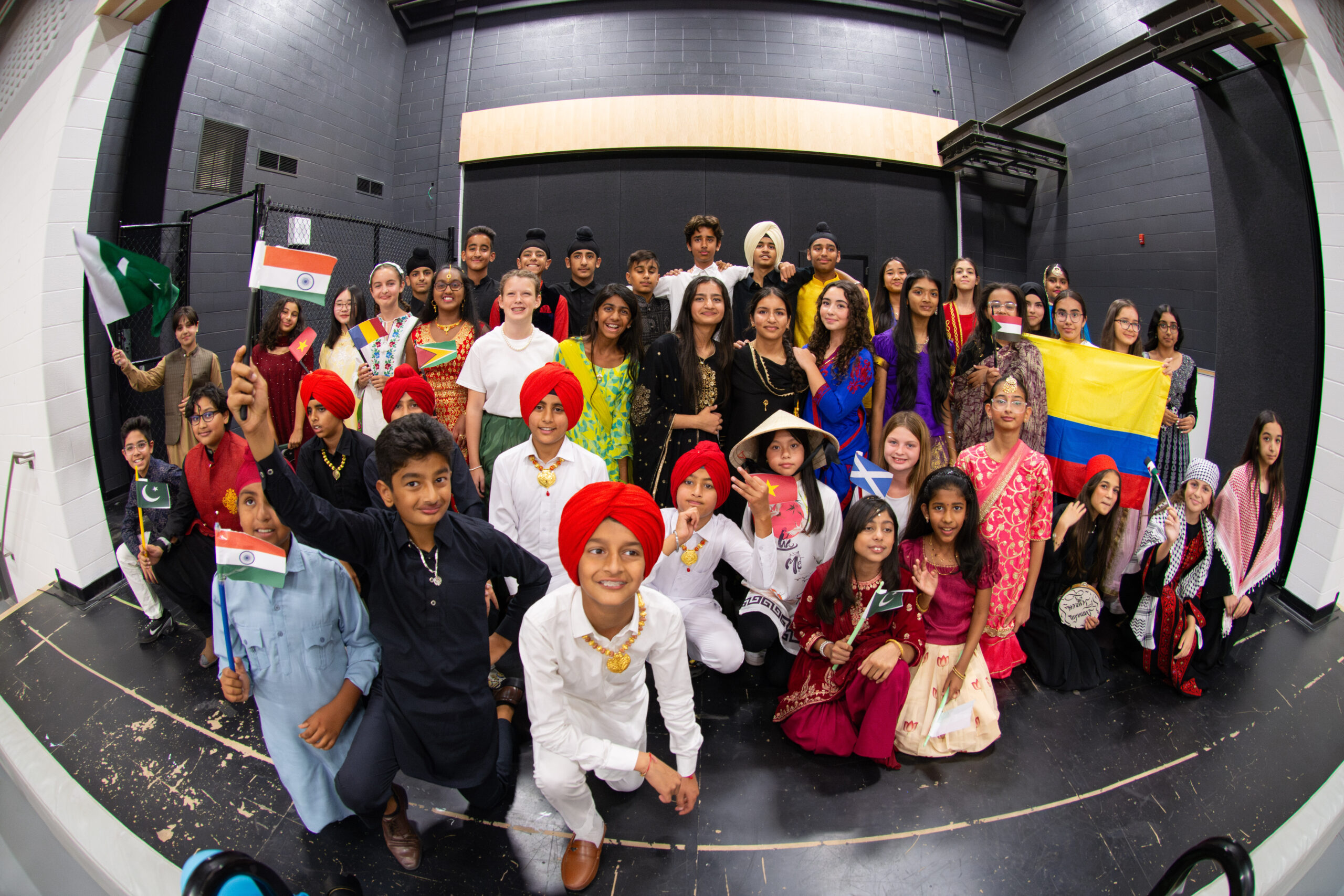
For Aly, preparation was key before the pitch to counteract performance nerves. “I tried memorizing the presentation we made, because I was nervous I might stutter,” he said.
On Wednesday, September 20, their plan became reality as students and their families packed the hallways of Groh Public School to sample foods from around the world as they took in displays of dancing and fashion.
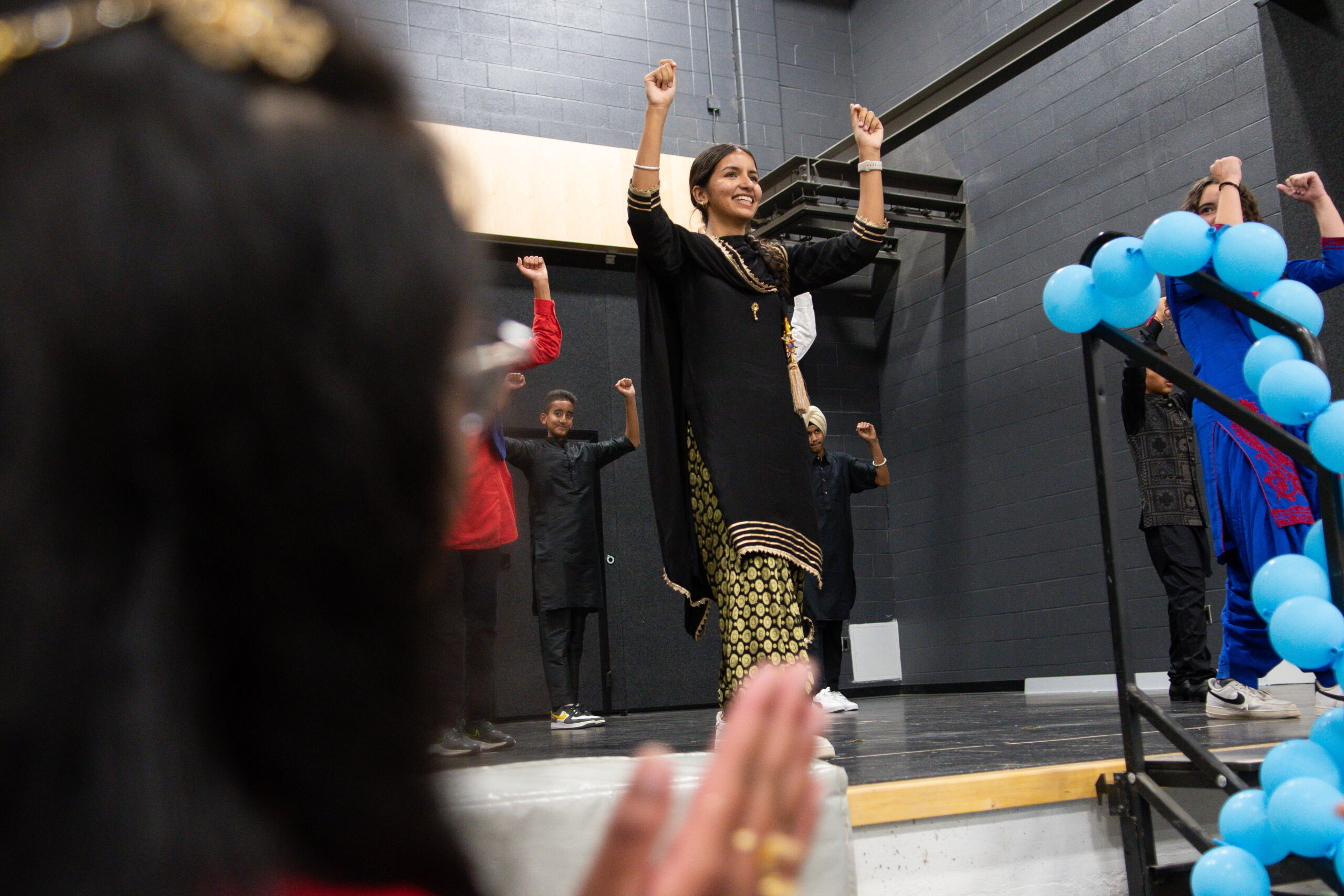
Vihaan explained why food played an important role in their plan to improve the experiences of newcomers.
“That’s like the taste of their culture,” he said. “Some people might not have tasted foods from around the world. Trying it may be a new experience for them and they might like it.”
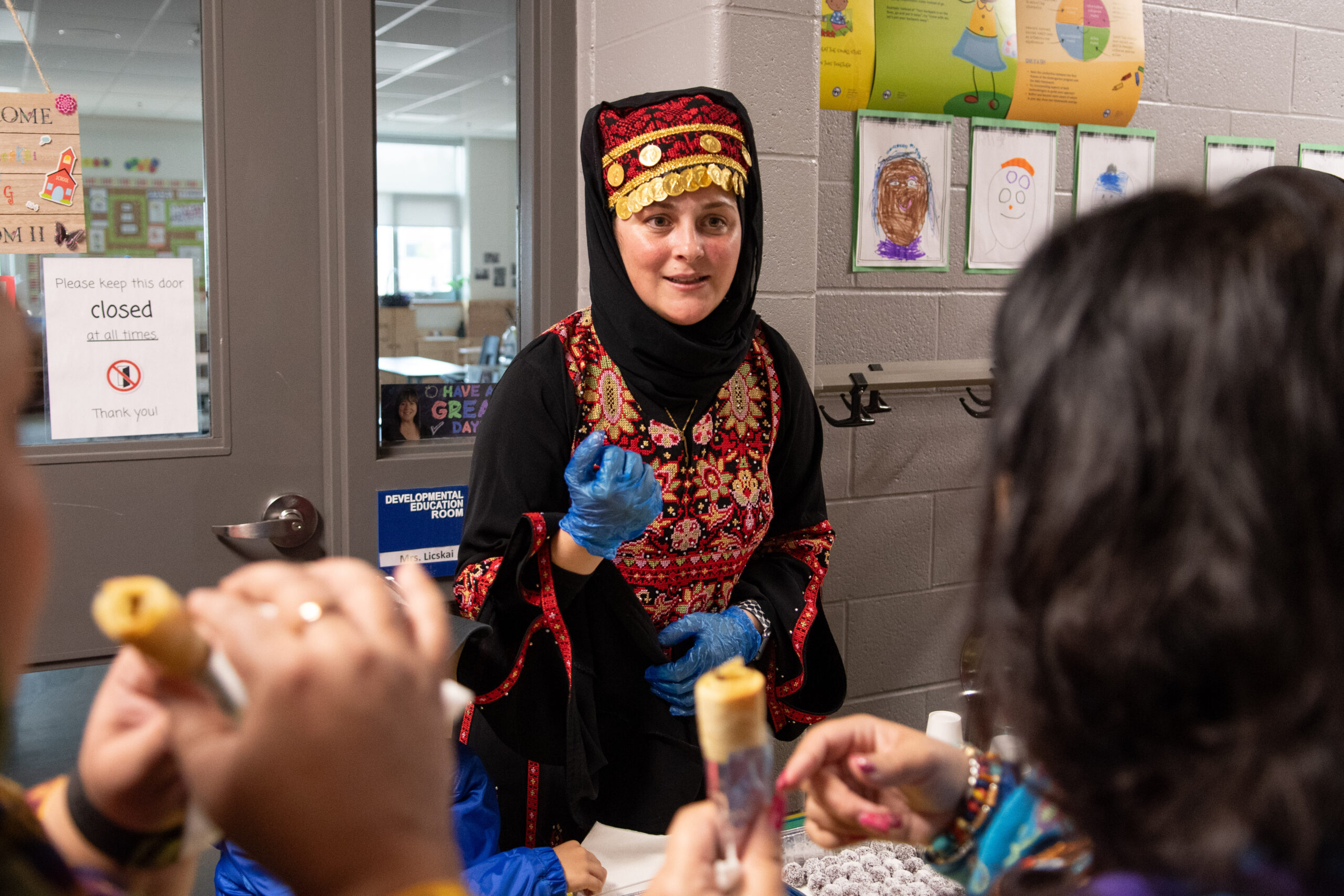
With the hard work and excitement of the event behind them, the group reflected on what they had learned by taking part in this design thinking project. For Vihaan, it was the importance of perseverance in the face of adversity.
“If it doesn’t work, you keep going,” he said. “Learn from your mistakes.”
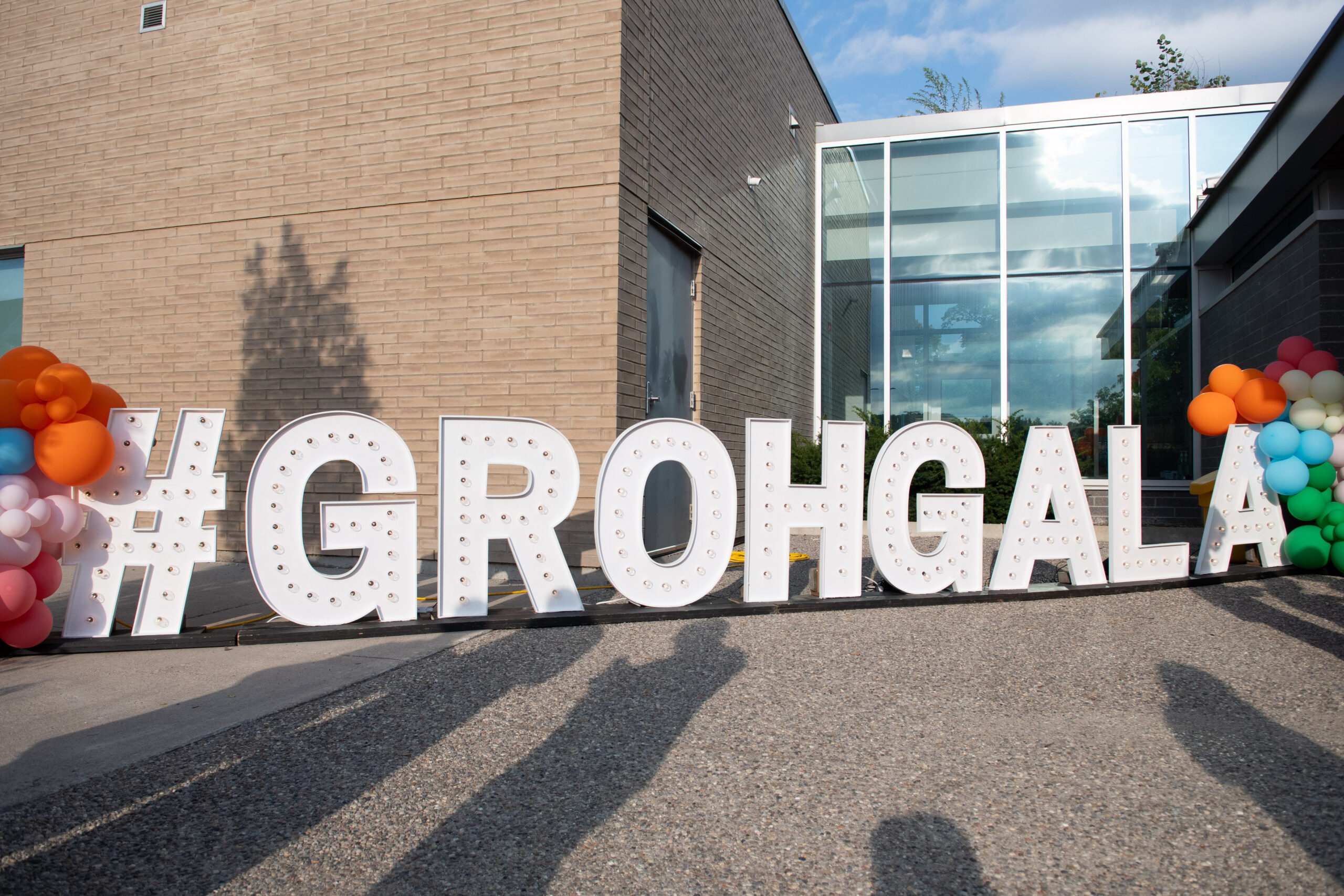
The group reflected on how it was a project unlike any other they had taken on in school previously. As they put their writing, math and critical thinking skills into practice for this project, what they learned went far beyond a grade or feedback from their teacher.
“The project helps people, it’s not just about a test,” said Vihaan. “It brings something to the community.”
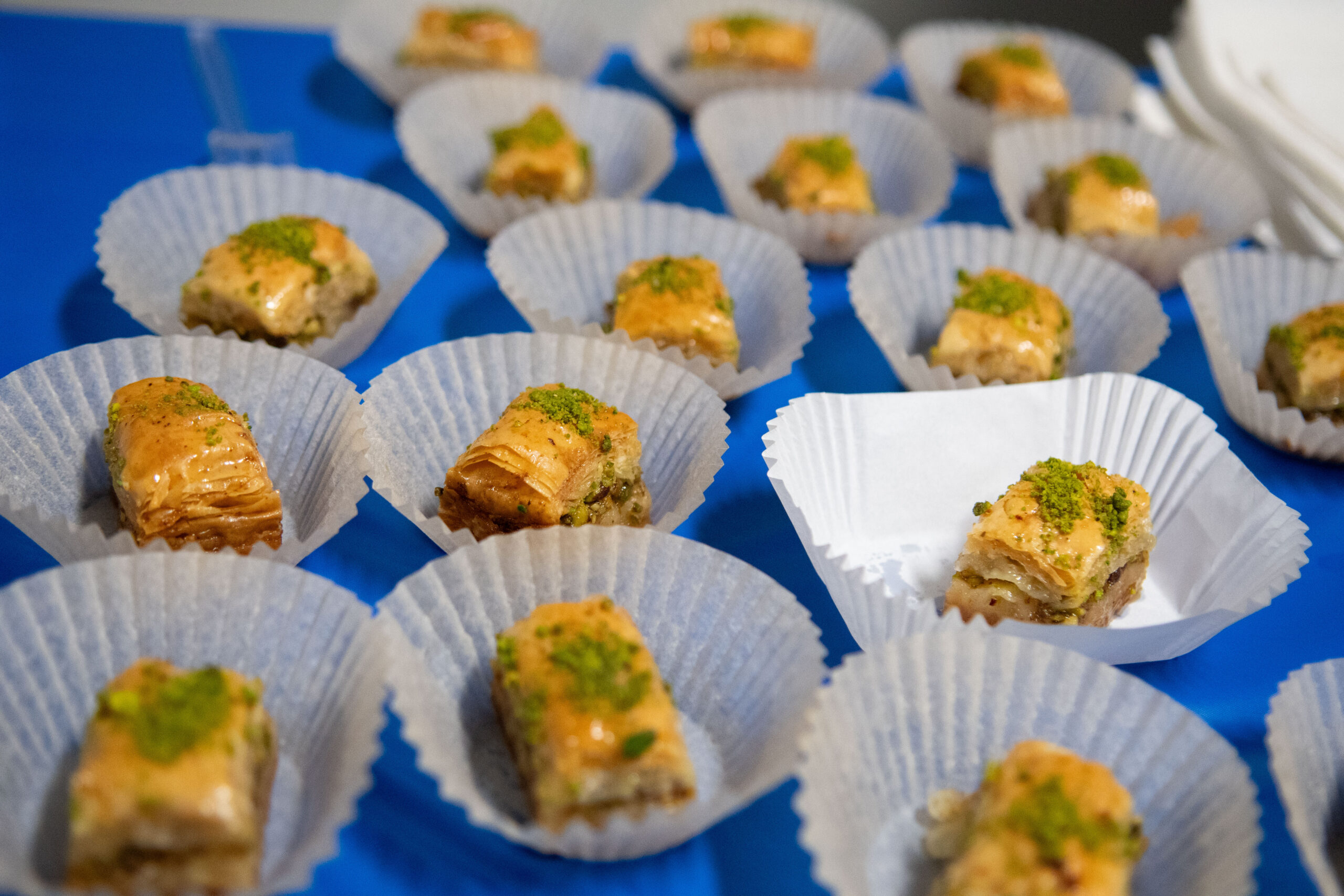
Pepe explained that this in-depth approach made for a richer learning experience, as he noted the range of academic skills he applied in the process, from math, to geography, and even event planning.
“We learned more with this project. A lot more,” said Pepe.
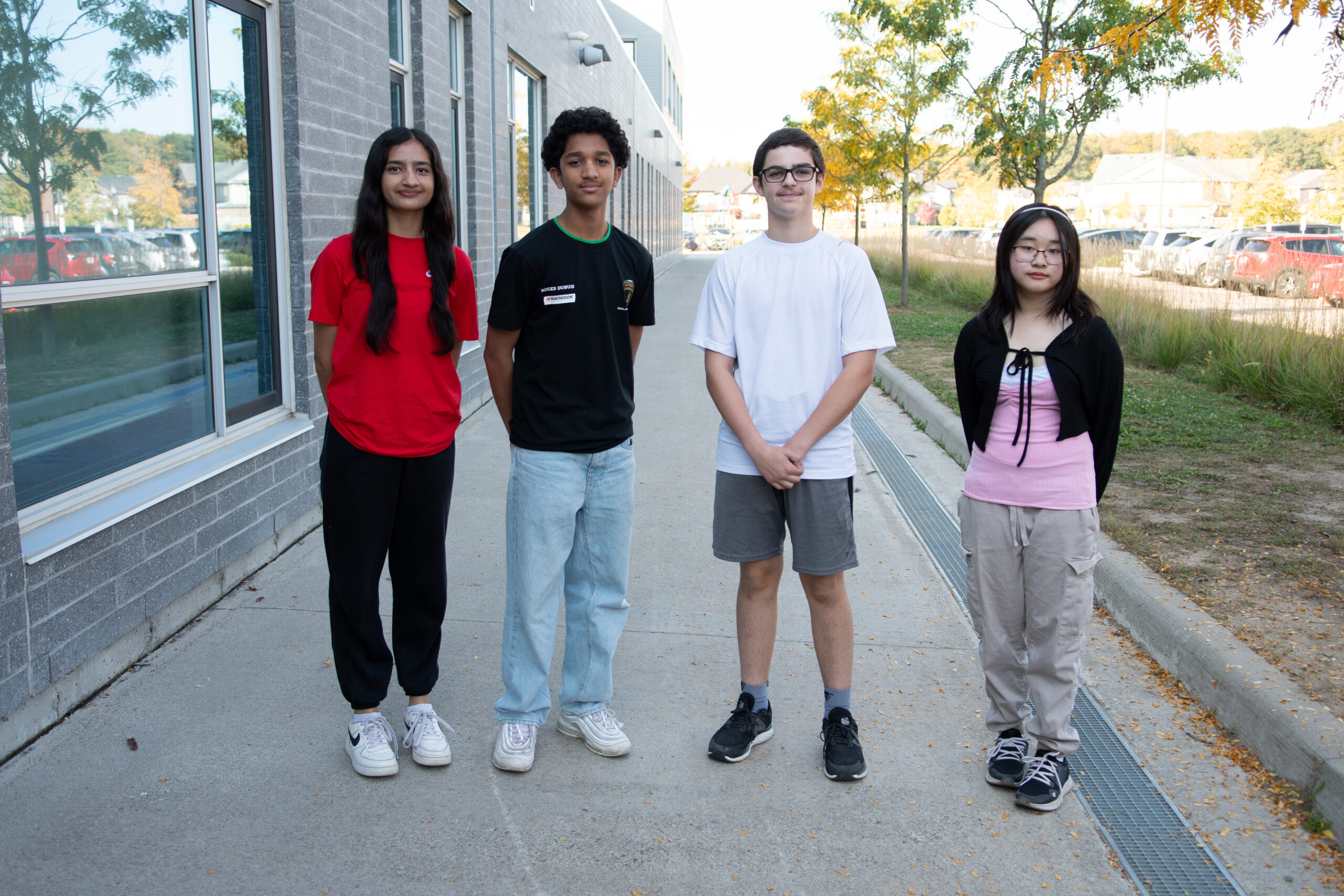
Deliciously Different
Jibrail, Sehaj, Connor and Jaycee took to illustrations and the written word as they tackled the problem of improving the experiences of newcomers. The group, known as the Buckaroos, wrote and published a children’s book called “Deliciously Different”, illustrated by a former Groh Public School student, Lily Zhang.
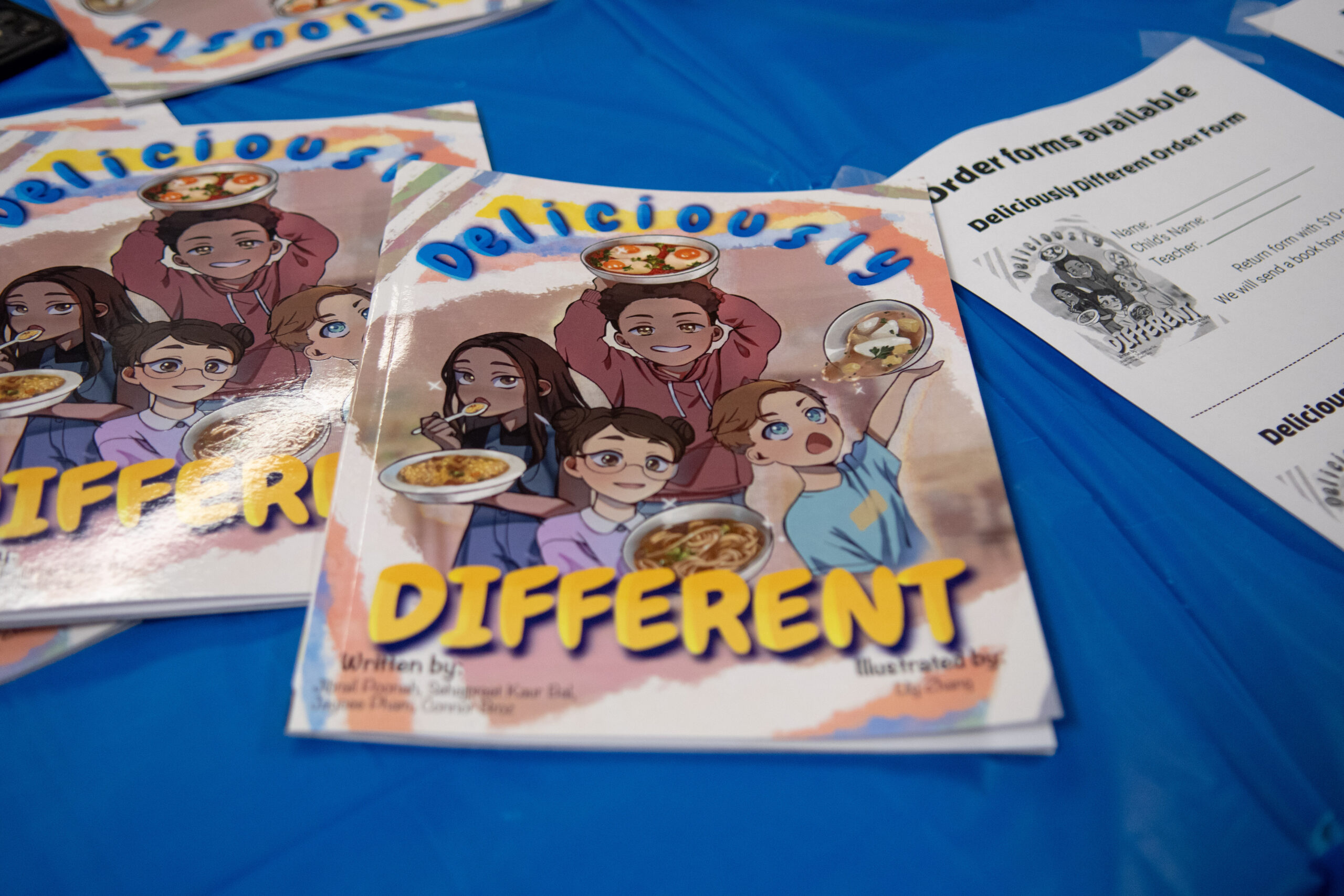
The book tells the story of the many different cultural dishes that students bring for lunch to school, and the richness of the diverse foods and cultures in one’s community. Jibrail explained that careful attention was paid to the foods depicted in the book, to ensure they were significant to those portrayed.
“We have a variety of different cultural foods, not much that you see at the grocery store,” said Jibrail.
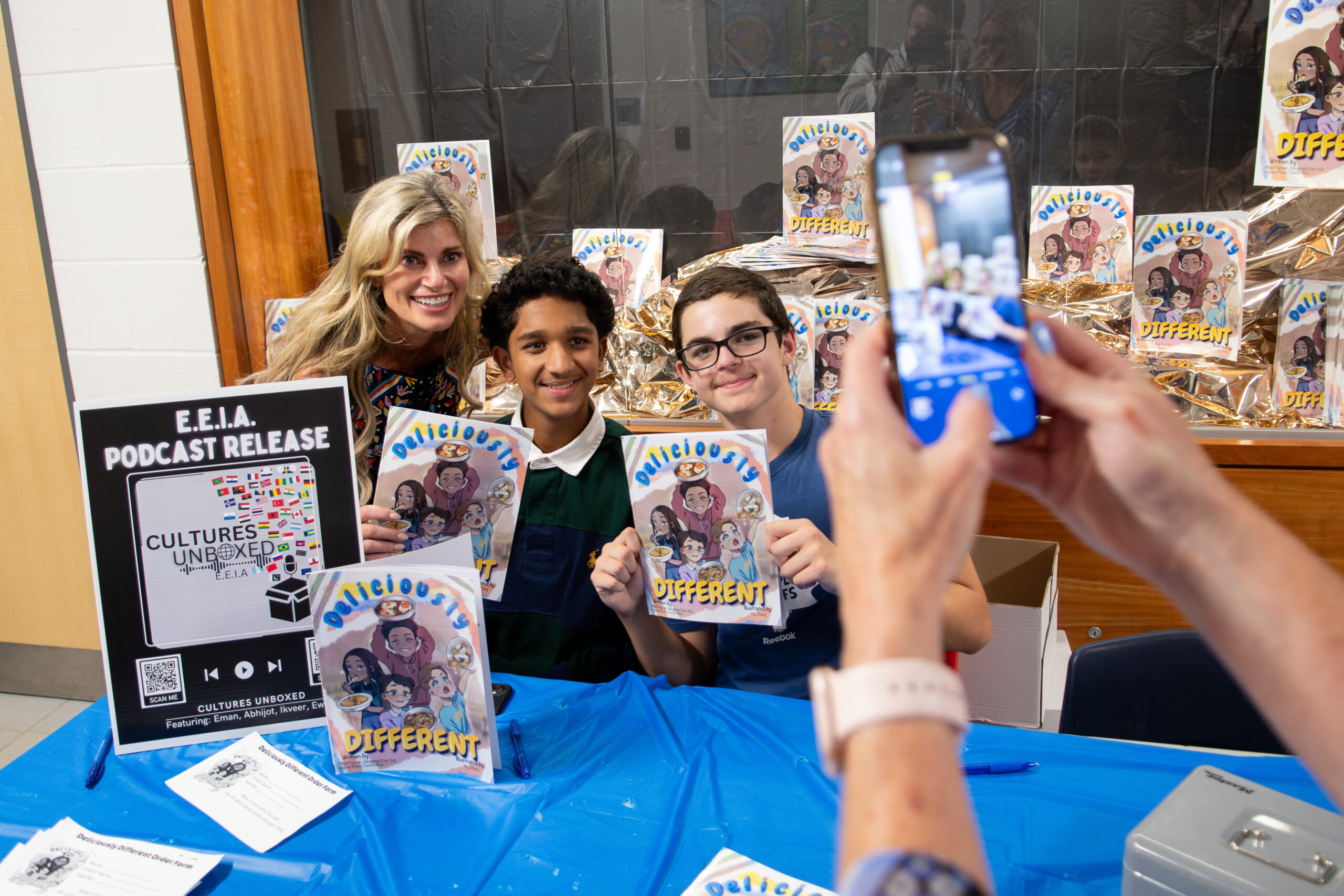
The group started out with the focus of writing a cookbook, but realized that this marketplace was already very crowded.
“We started with a recipe book,” said Sehaj. “We looked and there were so many other recipe books.”
Sehaj explained that focusing on a picture book allowed them to speak to younger students, with the aim of helping them learn the importance of making everyone feel welcome at a younger age.
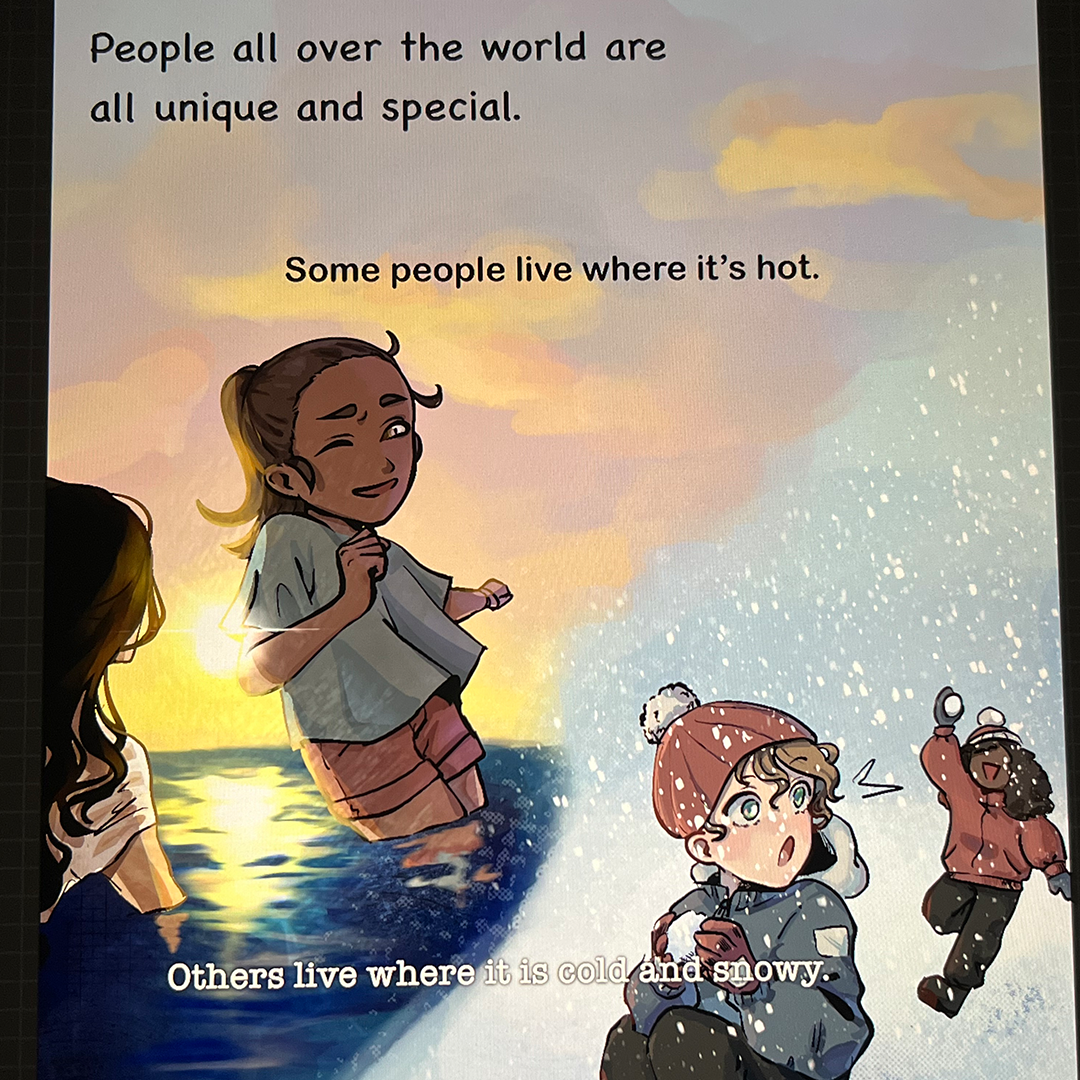
The early stages of design thinking invite students to hear from experts and those directly impacted. Connor reflected on a chance they had to speak with Kimiko Shibata, a multilingual language learner teacher.
“She talked a lot about food, and that’s what steered us in the direction of food,” said Connor.
When it came to writing the book, the group of students had the chance to refine their writing skills in collaboration with fellow students and educators at the school.
“We collaborated with Ms. Price, the librarian; we collaborated with a lot of Kindergarten classes,” said Sehaj. “When we had our draft, we read it to them and got their feedback.”
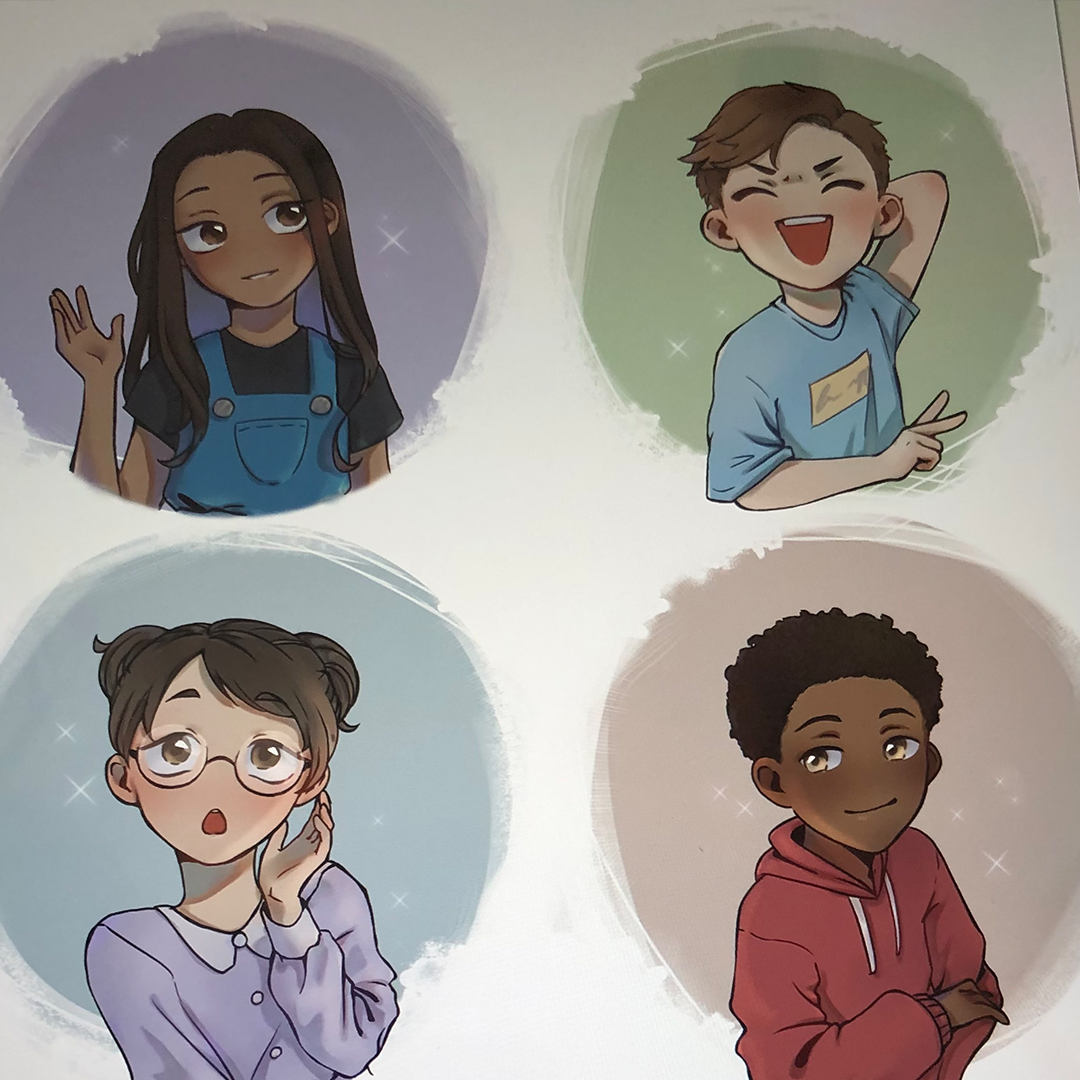
Now more than a year out from when they started this project, Jibrail reflected on what a different experience this was from the typical tests and projects he’s completed in school.
“It’s way different,” he said. “It’s nothing like any other assignment I have ever done.”
For Connor, the experience shifted his perspective on what was possible when taking the academic skills he’s learned, and applying them to a real world problem.
“This project changed my whole opinion on it,” he said. “I had such a great opportunity.”
“You feel proud of it,” added Sehaj. “It’s something you wouldn’t normally do at school.”
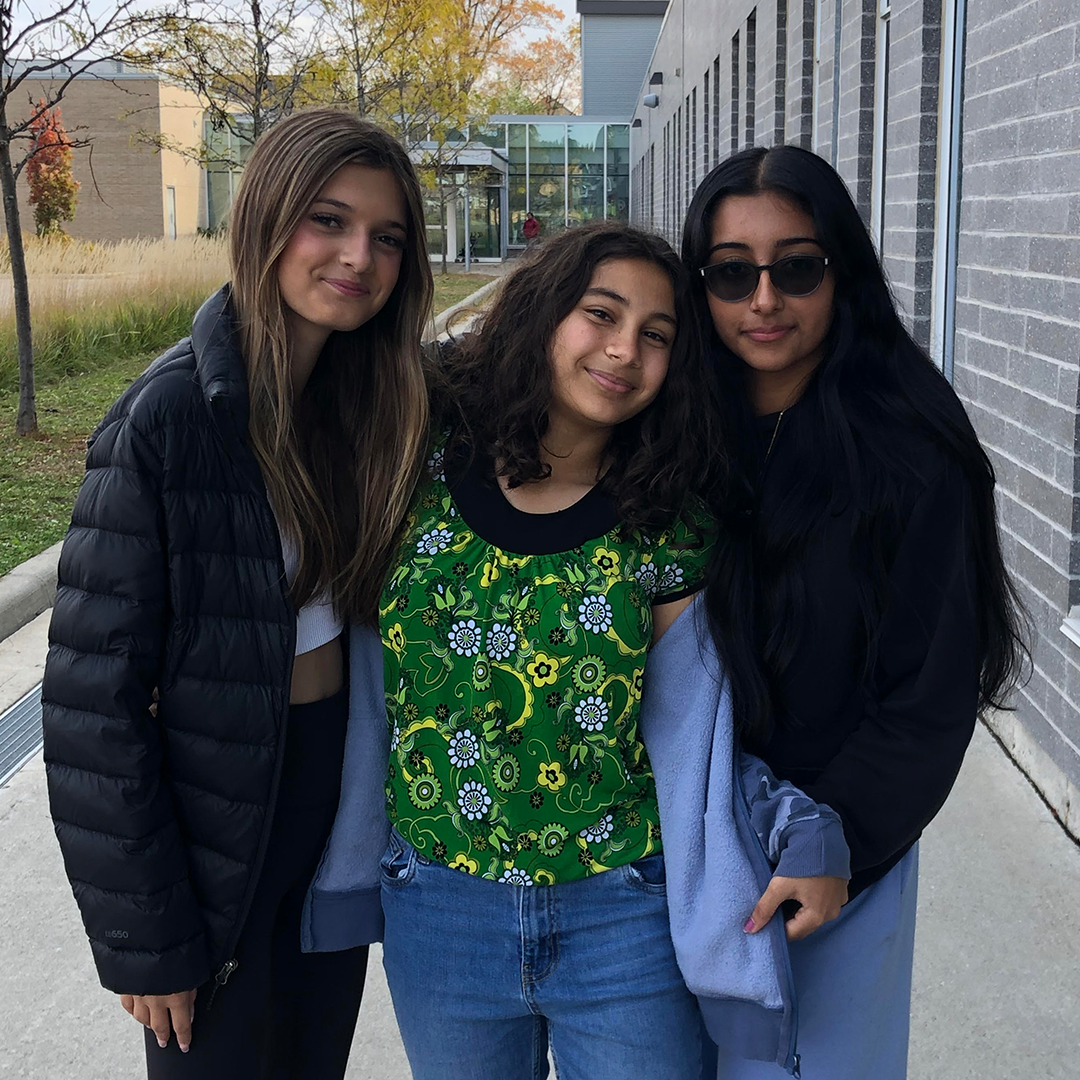
Murals at Groh
The results of students’ hard work in the classroom has extended far beyond those four walls at Groh Public School. The VALS (also known as the Valedictorians), which includes students Lilly, Rayna, Kirpa and Junnat, received funding for their plan to create murals throughout the school. Their aim was to reflect the students, families and communities that are served there, with the ultimate goal of improving the experiences of newcomers.
“For the newcomers, they can see that the school really cares about their students,” said Lilly.
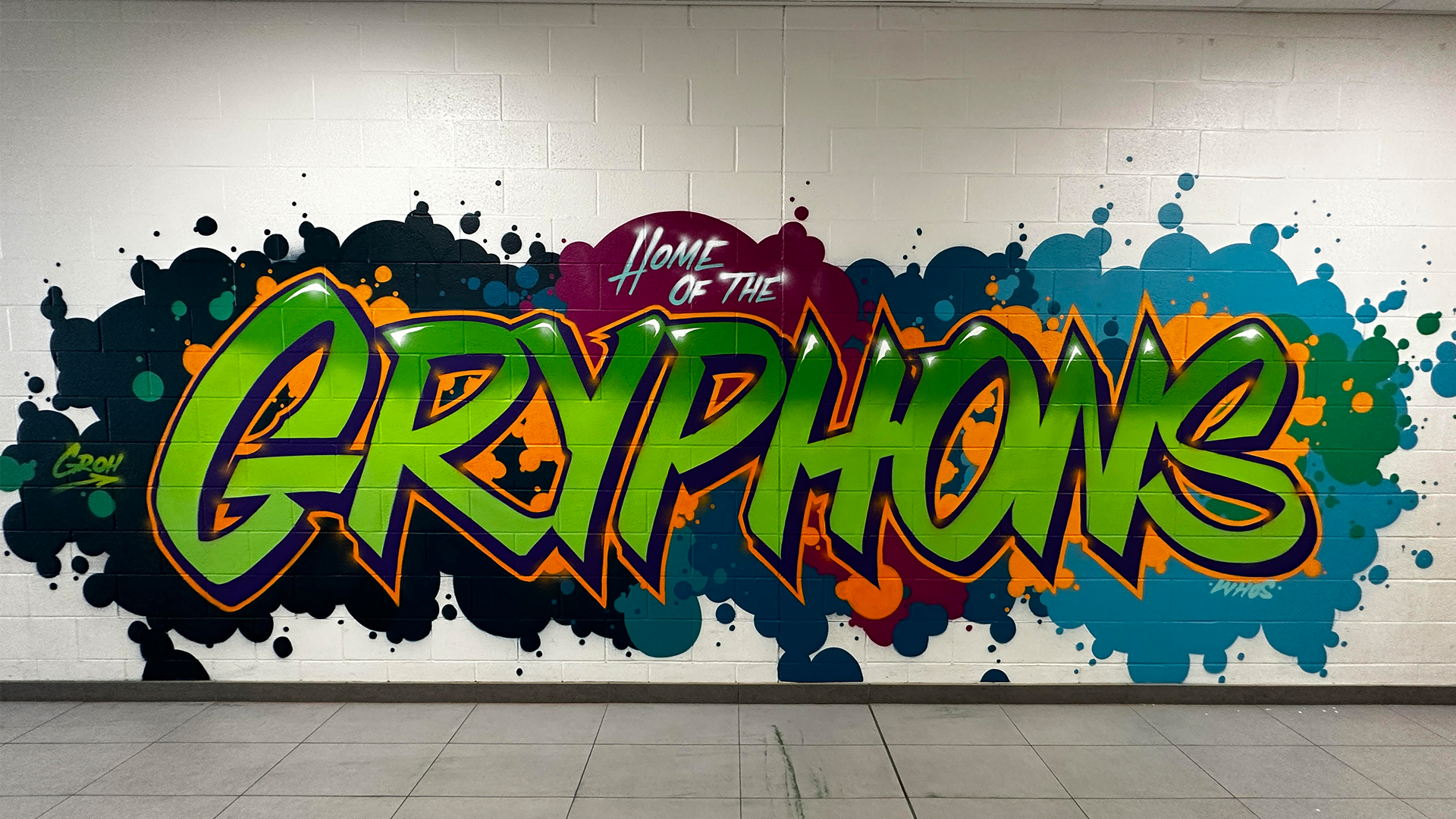
The group’s initial idea was to focus on upgrading one small area of the school, but they realized they could reach further and have a larger impact with the creation of murals for everyone to see.
“If we do something everyone can see, maybe it will bring everyone together,” said Lilly.
The real reward has been seeing the reactions of their peers to the new murals. Rayna shared what it was like seeing younger students checking out the new artwork.
“I was so proud, because we never had that before,” she said. “Everything was like a blank canvas and now we have these murals.”
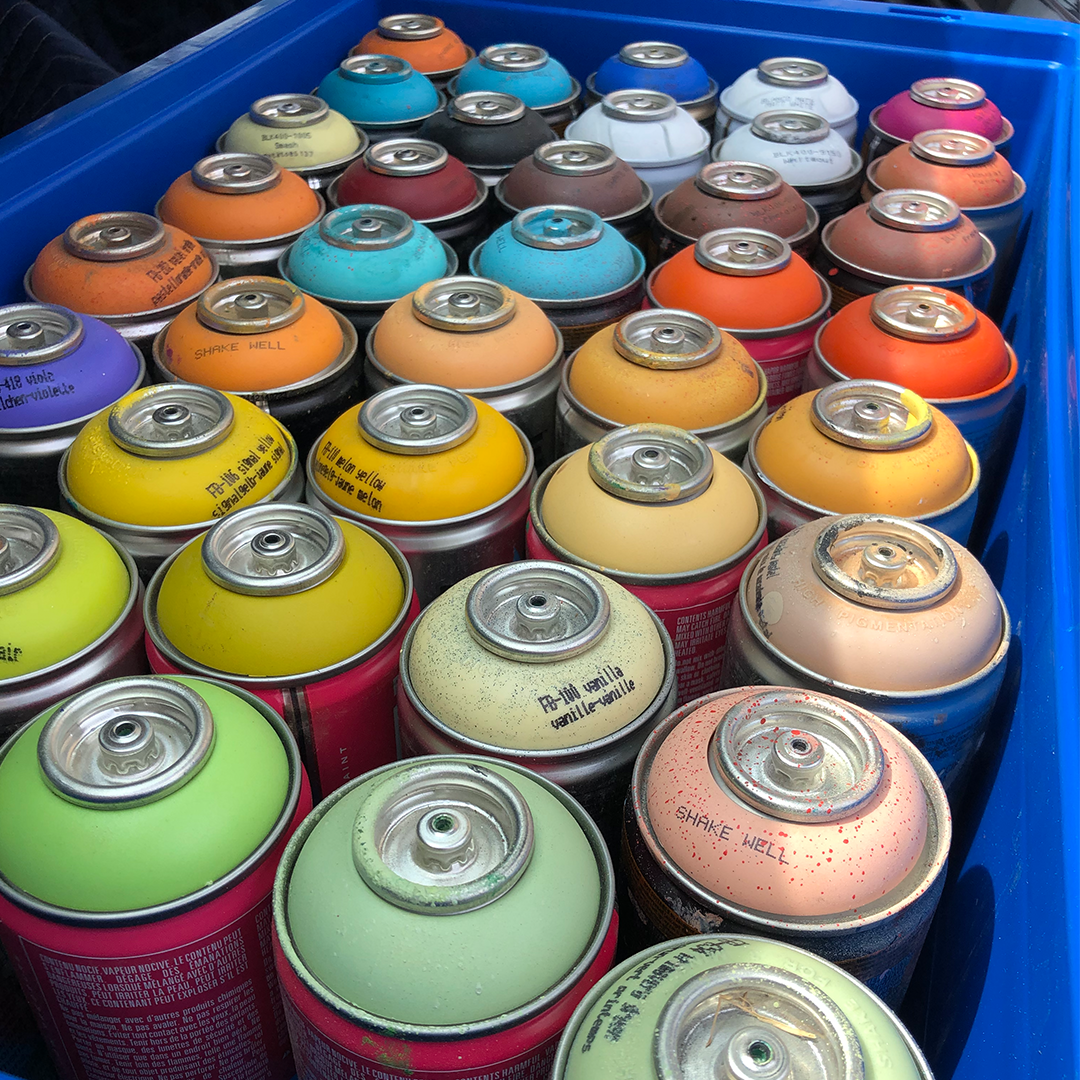
It goes far beyond a feeling of pride and accomplishment for these students, though. The skills and knowledge they built across a range of subjects, deployed to solve a real-world problem, has allowed them to create a new sense of confidence in what they are capable of.
“I’m more confident with my ideas,” said Rayna. “Every project is different, because of what we did in this project.”
Lilly also reflected about how much she had learned, from math and financial skills as they planned the funding, to becoming a better communicator and developing collaboration skills. When it all began, she remembered feeling unsure of how it would all turn out.
“I remember thinking ‘oh, this is way too hard, I can’t do this’,” she said.
Having made their project a success, Lilly shared she has newfound confidence in taking a similar design thinking approach to solving problems in the future.
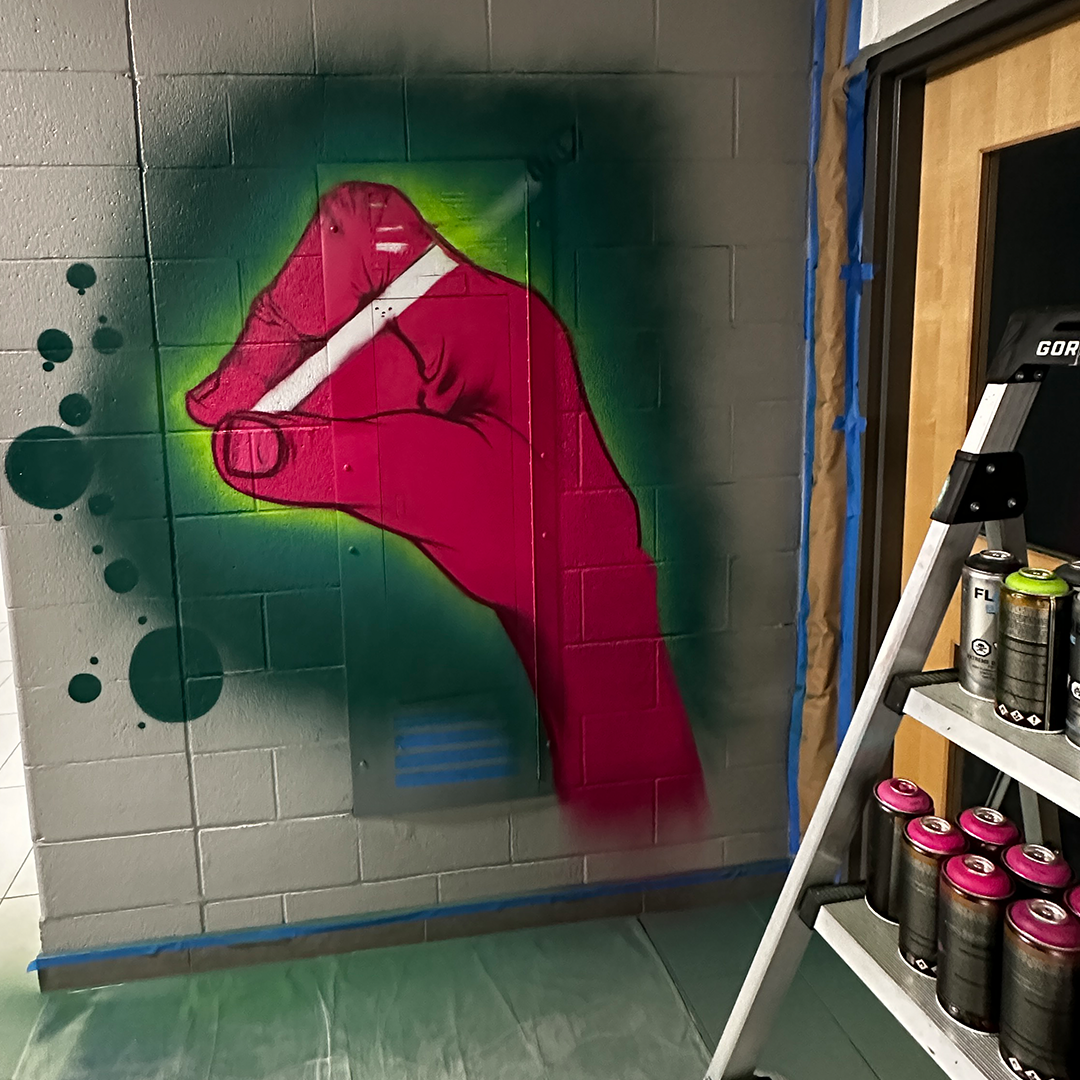
Though this is their last school year as students at Groh Public School, it’s clear they’ve made a mark that won’t soon be forgotten.
“Even though our names aren’t on it, we still have it in our hearts that we know that we did that,” said Lilly, with a smile. “We did something good for our school. It was definitely something I will remember forever.”
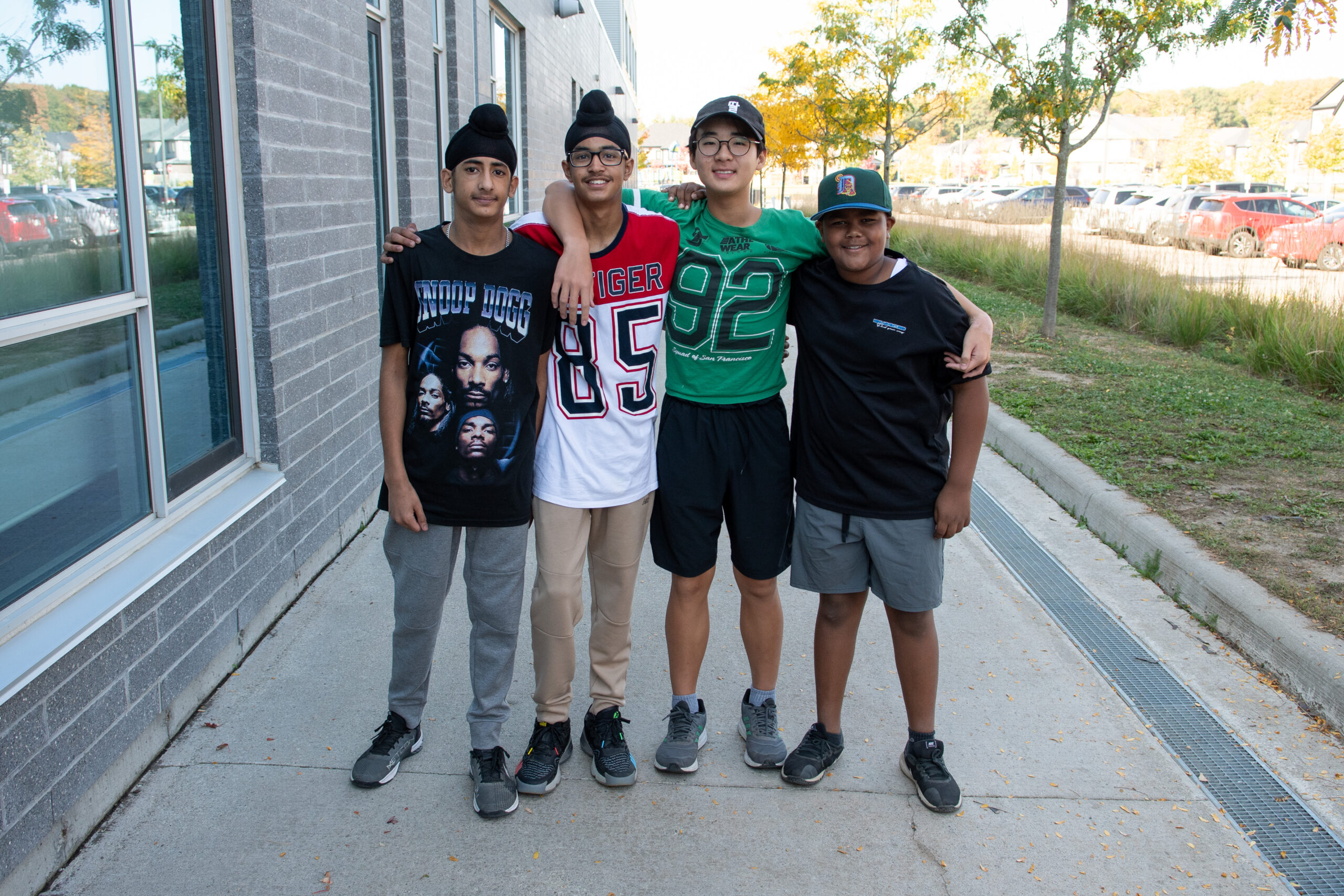
Cultures Unboxed Podcast
Abhijot, Emmanuel, Ewan and Ikveer sought to share the voices of their peers and community members as a way of improving the experiences of newcomers, so that they may see their culture represented in the school community. The result was the creation of the Cultures Unboxed Podcast.
“We interview people about their cultures and we ask them questions about their experiences,” said Ewan, explaining that topics cover everything from food to racism.
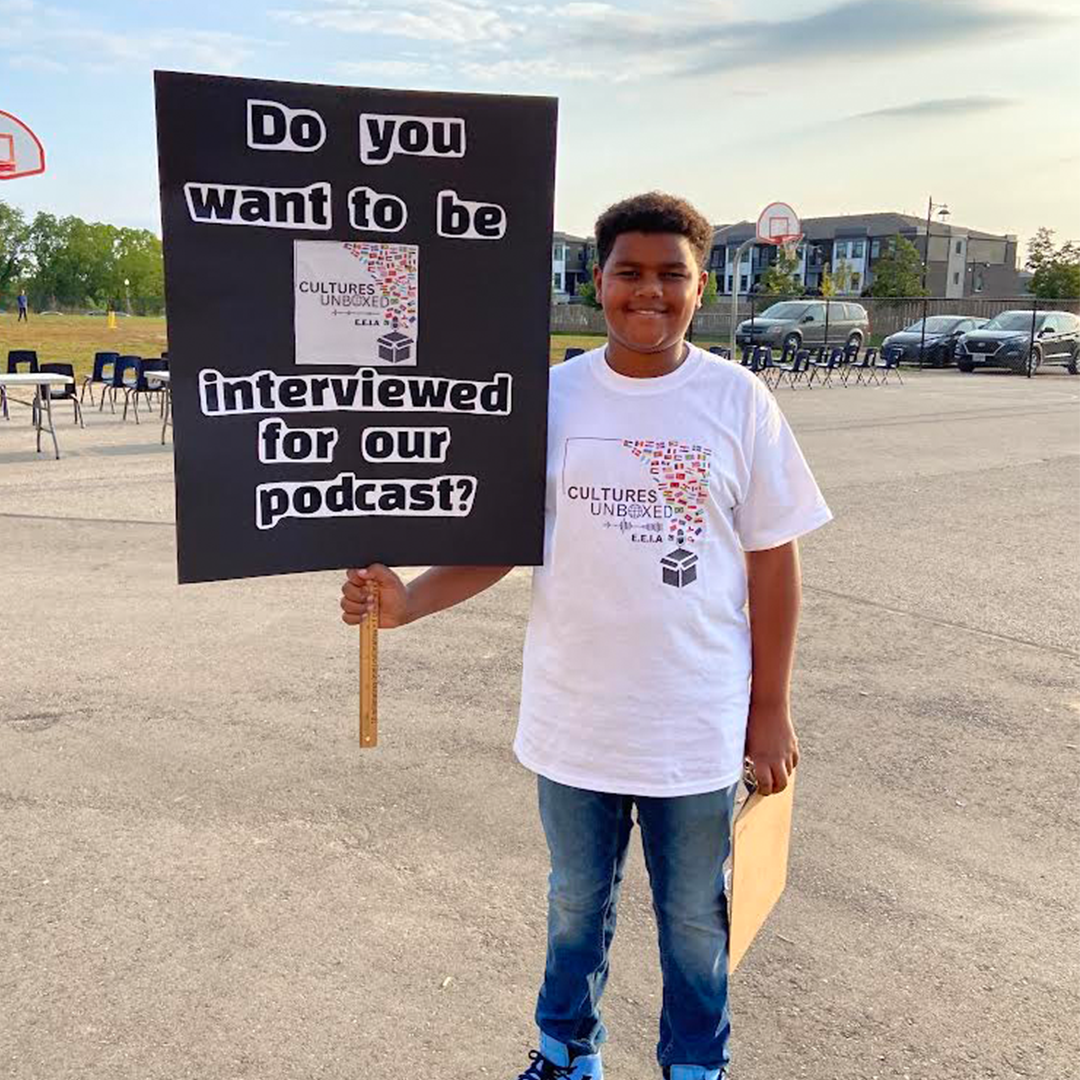
Now more than a year from when they started this project, the group reflected on how much they had accomplished in the classroom, and what an impact it has had on the world outside their school.
“It felt really cool to know that other people could hear what you’ve made with your friends and your pals,” said Emmanuel. “It makes the experience much better.”
In that time, the students had the chance to take an active approach to their learning, as they grew their skills in math, design, technology and communication, to name just a few areas. Ewan explained that it helped him to realize the true breadth of his own potential.

“I’ve learned that kids can do actual stuff,” said Ewan. “We’re actually making stuff happen.”
The learning goes beyond academics though. Empathy was one area that Emmanuel noticed personal growth, as he thought about what he learned about the first-hand experiences of newcomers.
“I think I would treat [newcomers] differently, knowing and understanding how it feels when someone would come into a new area or space,” he said.
Even though they worked together for more than a year on a challenging project, it’s clear the four students are still good friends, as they whisper jokes back and forth while sharing about their podcast. For them, collaboration made all the difference.
“You should choose your teams wisely,” said Emmanuel.
“So you can divide and conquer,” added Ikveer.
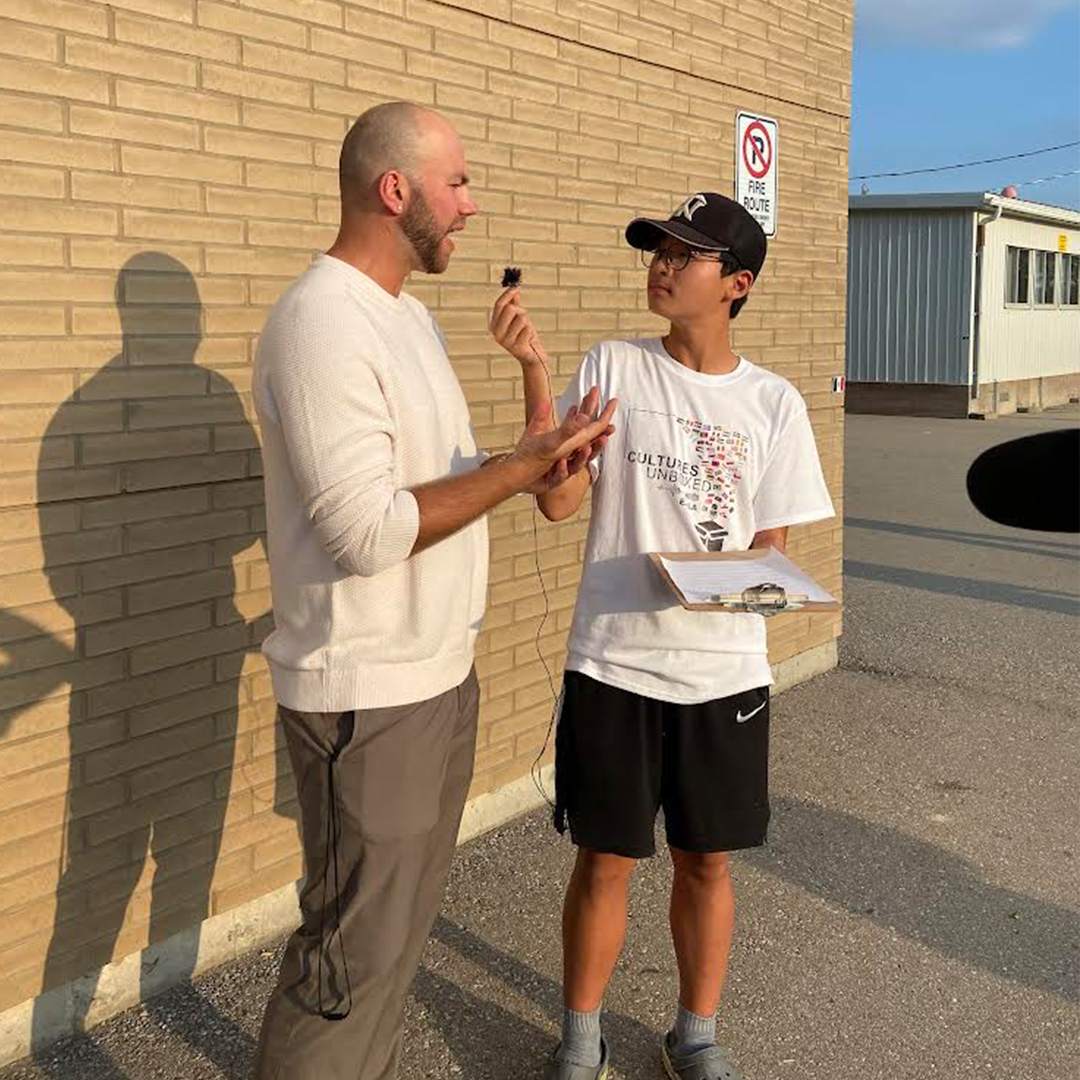
These students have now moved on to Grade 8, and out of Jes and Jen’s classes. However, it’s clear they are still connected to the results of their hard work. Jen explained they remain engaged, with the group behind Deliciously Different continuing to promote the message in their book by reading it to their younger peers.
“They still remain engaged, even though they’re not our students. It’s way beyond a mark on a report card, they’re attached to it,” said Jen. “That’s something they’ll have forever.”
Students Taking the Lead with Design Thinking in the WRDSB
Students across Waterloo Region are taking the lead in their learning with design thinking projects.
Read more:
- Preparing Waterloo Region’s Future Change Makers Through Systems Thinking
- Students Aim to Improve Experiences of Newcomers with Design Thinking
- Bringing Innovation to Secondary Students Across the WRDSB
Categories: #WeAreWRDSB · Feature Tags: #StudentVoice · Design Thinking · Groh Public School · Smart Waterloo Innovation Lab · SWRIL

